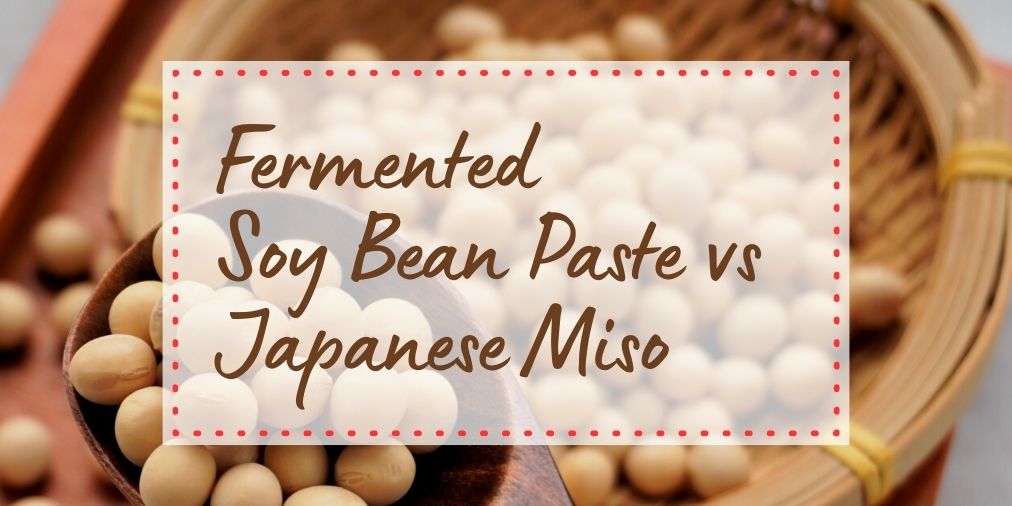Hi, it’s Junko from Japan! Have you ever wondered about the difference between fermented soybean paste and miso? Yes, it’s a confusing matter.
As a lover of Japanese cuisine, I’ve delved into this topic to uncover the unique aspects of these traditional condiments. So, let’s explore the fascinating world of fermented soybean paste and miso together!
Various Fermented Soybean Pastes in Asia
Interestingly, fermented soybean pastes or sauces aren’t limited to miso alone. Various Asian countries have their own versions of fermented soybean paste, each with its own set of ingredients and distinguishing features.
It’s incredible to see how different cultures have embraced the concept of fermenting soybeans into flavorful pastes.
| Country | Fermented Soybean Paste | Major Ingredients | Features |
|---|---|---|---|
| Japan | Miso | Soybeans, Rice or Barley, Salt, Koji | Rich umami flavor, versatile |
| South Korea | Doenjang | Soybeans, Salt, Rice, Barley, Koji | Deep, savory taste, used in various dishes |
| China | Douchi | Black Soybeans, Salt | Intense, salty flavor, used as a condiment |
| Indonesia | Tauco | Soybeans, Salt, Rice, Yeast | Salty and slightly sweet, used in cooking |
| Vietnam | Tương | Soybeans, Salt, Water, Roasted Rice | Mild and savory, used in dipping sauces |
| Thailand | Taochiao | Soybeans, Salt, Rice, Water | Salty and pungent, used in stir-fried dishes |
| Philippines | Bagoong | Fermented Shrimp or Fish, Salt | Salty and savory, used as a condiment |
| Myanmar | Pè ngapi | Fermented Fish, Salt, Spices | Salty and aromatic, used in curries |
What Makes Japanese Miso Unique?
You know what makes miso so special in Japan? It’s all about the amazing power of fermentation using koji.
When soybeans are fermented with koji, something magical happens. The process increases the levels of amino acids and vitamins in the soybeans, and it even introduces components like yeast and lactic acid bacteria that aren’t naturally present.
As a result, miso becomes a nutritional powerhouse with incredible health benefits. In fact, miso has been celebrated as a healthy food for centuries.

Back in old Japan, there was a saying that went something like this: “If you want to be healthy, pay the miso shop rather than the doctor.” That’s how highly regarded miso was for its remarkable health-promoting qualities.
Isn’t it fascinating how a simple ingredient like koji can transform soybeans into a nutritious and flavorful paste? It’s a testament to the wisdom of our ancestors and their understanding of the power of fermentation.
Japanese National Fungus: Aspergillus Oryzae
The use of koji in miso production isn’t limited to just miso itself. It plays a vital role in the creation of other traditional fermented foods like soy sauce and sake.
Aspergillus oryzae, the specific strain of fungus used to produce koji, holds a special place in Japanese culture. In fact, it’s considered the national fungus of Japan and has been used for centuries in the art of fermentation.
What makes Aspergillus oryzae even more intriguing is its unique characteristic. While it belongs to the mold family, this fungus does not produce any harmful toxins.
It’s a testament to the meticulous craftsmanship of Japanese fermentation techniques that have been perfected over generations.
The discovery and utilization of Aspergillus oryzae in ancient Japan is a captivating mystery. How did the people of that time identify this special fungus without the aid of microscopes?
The historical journey behind the production of miso and other fermented foods is truly awe-inspiring.
What Are the Health Benefits of Consuming Miso?
The health benefits of consuming miso are truly remarkable. This versatile fermented soybean paste is packed with a wide range of essential nutrients that contribute to overall well-being. Let’s dive into the nutritional goodness of miso and discover how it can support your health in various ways.
Protein Powerhouse
Miso is a fantastic source of high-quality soy protein, providing the building blocks for strong muscles and supporting various bodily functions.
Gut-Friendly Fiber
With its dietary fiber content, miso promotes a healthy digestive system and helps maintain regularity.
Vital Vitamins
Miso contains an array of vitamins, including E, K, B1, B2, B6, B12, niacin, and folate. These vitamins play essential roles in energy metabolism, nerve function, and overall vitality.
Mineral Marvels
Rich in minerals like sodium, potassium, calcium, magnesium, phosphorus, iron, zinc, and copper, miso contributes to maintaining proper electrolyte balance, strong bones, and efficient cellular function.
Plant Compounds
Miso also provides valuable plant compounds such as soy saponins and soy isoflavones, which have antioxidant and potential health-promoting effects.
As you can see, miso is not only a flavorful addition to your meals but also a nutrient powerhouse. By incorporating miso into your diet, you can enjoy its many health benefits and savor the unique flavors it brings to your culinary adventures.
Let’s explore some delicious miso-based recipes that will delight your taste buds and nourish your body!
Find Out More about Miso Paste
Is Miso Paste GLUTEN-FREE? Clearing Up the Confusion
How Is Miso Paste Made? You Need Just 3 Ingredients!
Is Miso Paste Low Carb? Can You Include It in Your Meal Plan?


Leave a Comment!